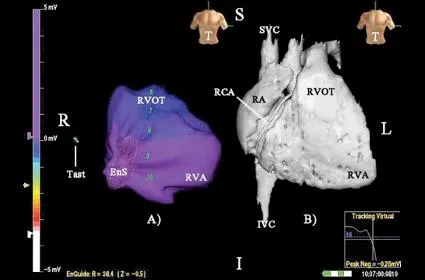
The Arrhythmia Research group seeks to better understand the mechanisms which promote and sustain disturbances of heart rhythm in humans. Over the last decade, the rapid development of technologies to diagnose and treat cardiac arrhythmia by percutaneous catheter ablation has promoted a parallel acceleration in our understanding of the causes of these arrhythmias. Our understanding of the current limits to that knowledge, which may prevent complete cure in an individual patient, has advanced.
Recent work has redirected the field of electrophysiology towards the influence of cardiac pathophysiology on disturbances of electrical function. High resolution imaging techniques, including MRI, offer pathological information in vivo, which was previously unknown to the electrophysiologist. Using existing strengths in advanced cardiovascular imaging, the research team seeks (a) to develop a better understanding of arrhythmia substrate and therefore mechanism leading to (b) improved techniques for curative catheter ablation. The principal focus of the research group is on atrial fibrillation and ventricular tachycardia. There are a number of key areas:
- The relationship between cardiac fibrosis or scar determined by MRI and electrical conduction properties.
- Evaluation and study of ablation lesions using MRI
- Use of new catheter technologies for ablation.
- Development of an MRI-compatible environment for combined performance of ablation procedures and analysis of their biological effect
The research group avails of the extensive expertise within the Division in the fields of computational modeling, MR imaging, image processing and clinical arrhythmia management to drive the research agenda. We believe that an interdisciplinary approach will further accelerate progress, ultimately leading to better, safer and more permanent treatments for patients with cardiac arrhythmias.